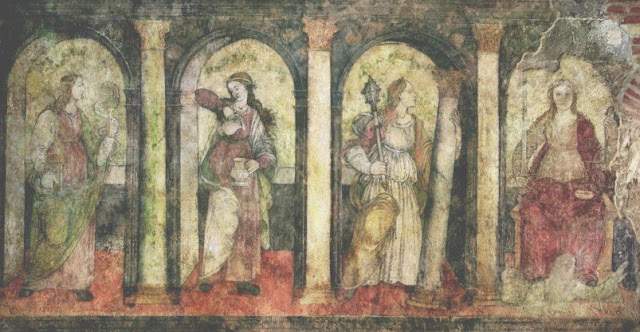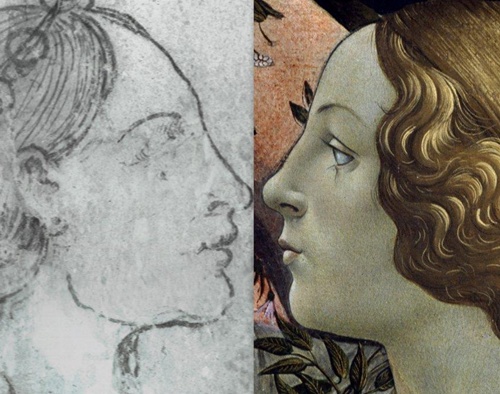It has recently been stated by the Hungaarian government that new financial sources have been provided for the completion of the restoration of the medieval castle complex in Esztergom, in particular that of the early Gothic castle chapel and the adjoining spaces, which are decorated with frescoes. The 14th century frescoes of the chapel as well as the late 15th century frescoes of the so-called 'Studiolo' have been under restoration since 2000 - an impossibly long time. With the new funds, the end maybe is in sight - the chapel will be accessible again as early as next Spring, while the frescoes of the Studiolo will be on view again in 2015.
Recently, most attention has been given to these Renaissance frescoes, following the sensational claim made by restorer Zsuzsanna Wierdl and art historian Mária Prokopp in 2007 that the figure of Temperantia from a series of the Virtues was painted by the young Botticelli, who was in Hungary during the 1460s. Although disputed soon after the announcement, the authors keep repeating this claim, which has been published in various places - including the acts of the 2007 conference on Italy and Hungary in the Renaissance, held at Villa I Tatti in Florence. I reported on this claim and some response it received in an earlier post. According to an article published this week in Hungarian daily Népszabadság, the authors claim that their attribution of the fresco to Botticelli has gained acceptance and has not been refuted until now. In fact, they now believe that all surviving figures of the Virtues can be attributed to Botticelli. Well, Népszabadság may not be an authoritative source on questions of attribution - but it is definitely wrong on the issue of responses to the Botticelli-attribution. Let's see a few publications on the subject!
 |
| Conditions at the Esztergom 'Studiolo' during recent years |
First, I would like to call attention on the publications of Mária Prokopp and Zsuzsanna Wierdl. The attribution to Botticelli was first presented at the Villa I Tatti conference held in 2007 - the conference volume has since been published, with texts by both authors on the subject. The authors have also published a Hungarian-language book on the subject, and their arguments have been summarized in a number of other publications, for example in Rivista di Studi Ungheresi in 2012. If you would like just a quick overview, read the article by Mária Prokopp, published in Hungarian Review. In addition to stylistic and historical arguments, the attribution rests on the interpretation of the letters MB incised in the frescoes, supposedly referring to "(Alessandro di) Mariano, detto Botticelli".






